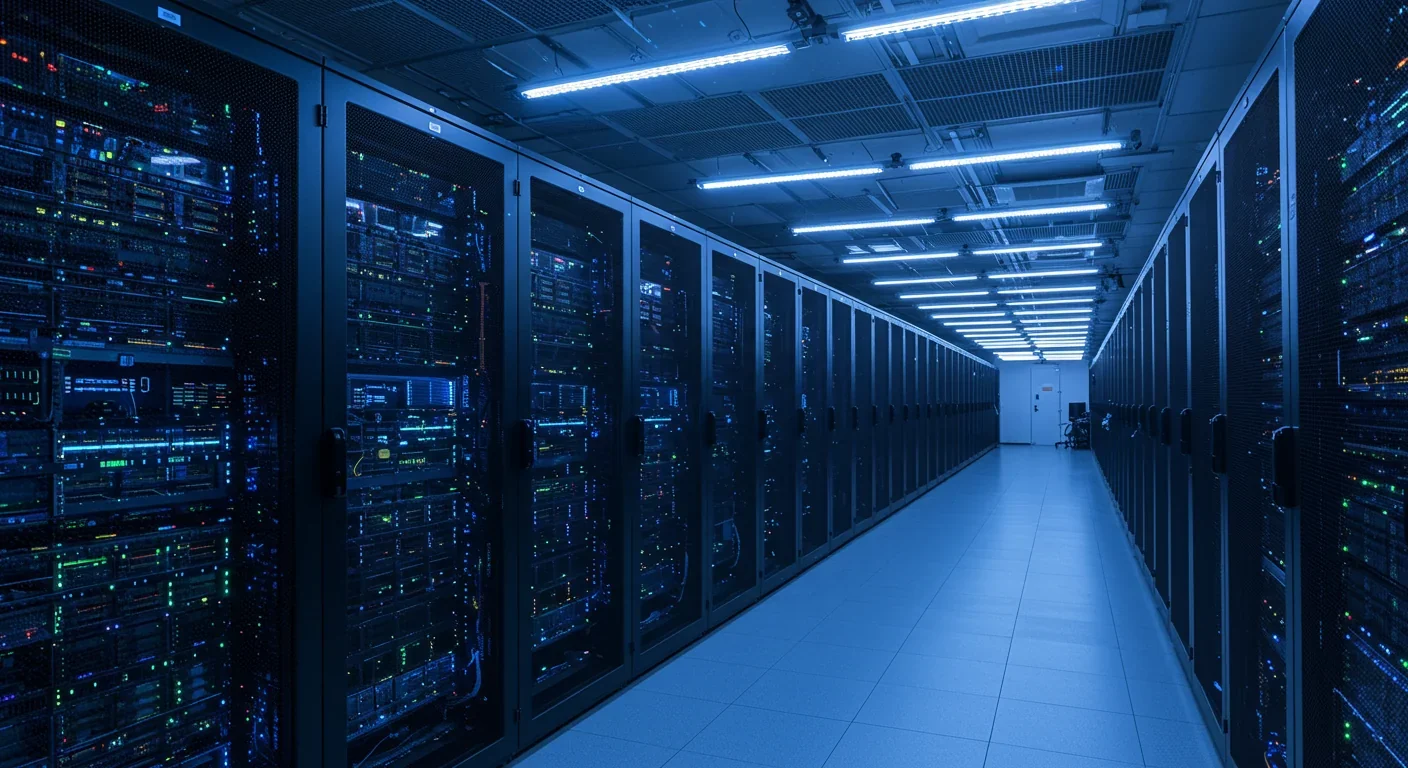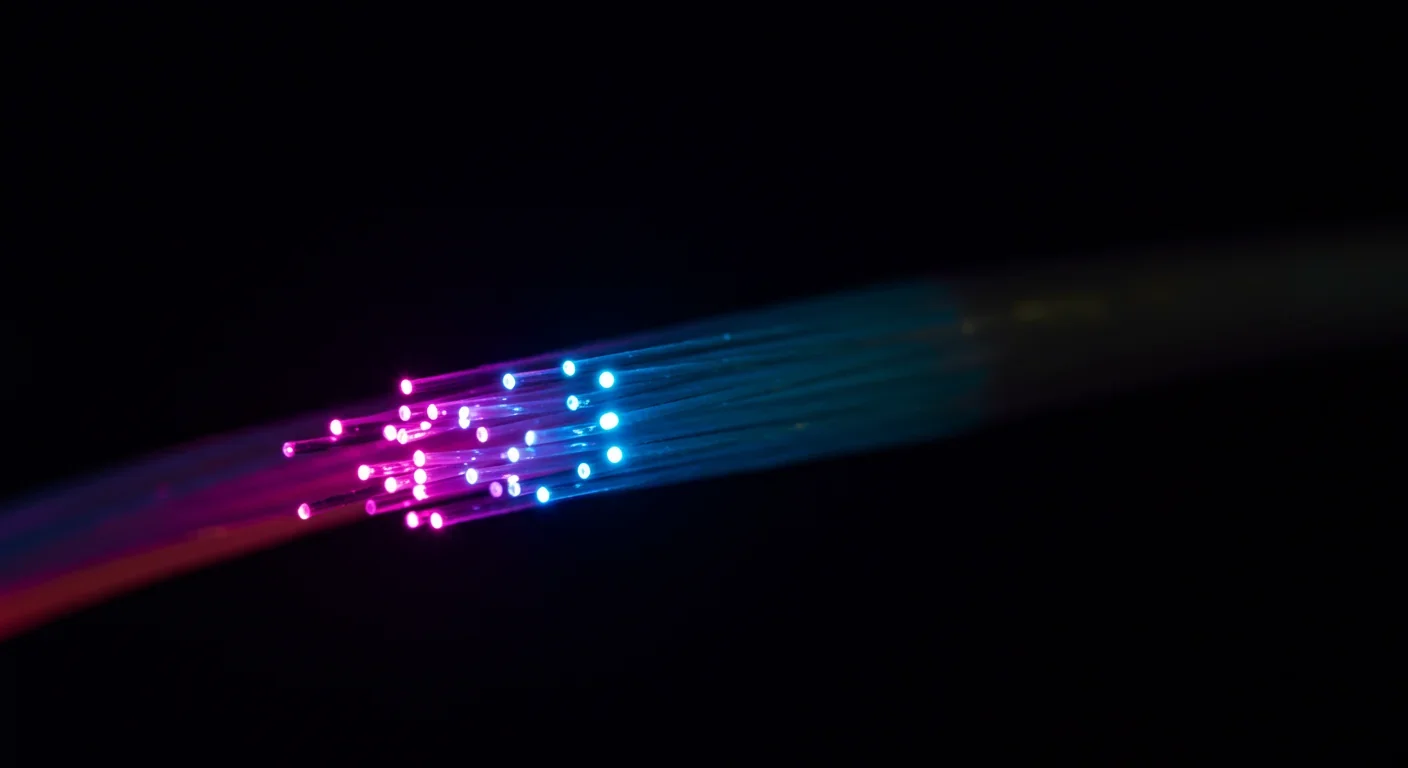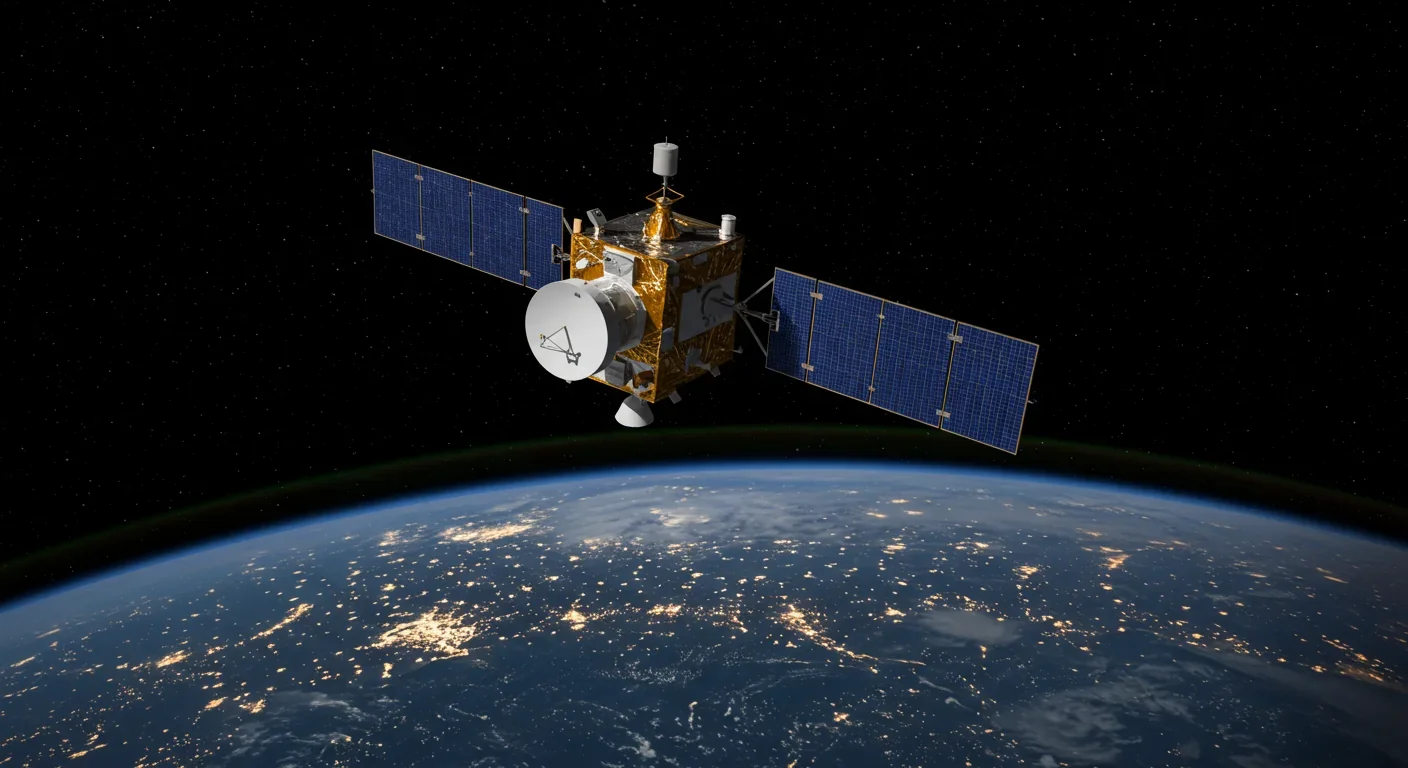How Transformers Replaced Word2Vec in NLP

TL;DR: Quantum internet networks using entanglement are already operational in China, the U.S., and Europe. While not replacing classical internet, they offer unhackable communications through quantum key distribution. Major technical barriers include quantum repeaters and specialized hardware, but metropolitan-scale networks work today on existing fiber infrastructure.

Imagine a communication network where intercepting a message doesn't just get detected—it becomes physically impossible. Where quantum entanglement enables information transfer that can't be hacked, copied, or eavesdropped without leaving obvious traces. This isn't science fiction. Research labs worldwide are building the quantum internet right now, and the first networks are already operational.
The quantum internet won't make Netflix stream faster. Instead, it represents a fundamental shift in how information moves through space—from transmitting copies of data to sharing quantum states themselves. While your laptop sends bits as electrical pulses, quantum networks distribute entangled photons that remain mysteriously connected across vast distances. China has already demonstrated quantum key distribution over 7,500 kilometers between Beijing and Vienna using satellite links. American researchers at Fermilab operate a 150-kilometer metropolitan quantum network connecting multiple sites through existing fiber-optic cables.
Classical internet infrastructure moves information by copying bits from one place to another. Your email travels through dozens of routers, each creating a new copy. Quantum networks can't work this way because quantum mechanics forbids copying unknown quantum states—a principle called the no-cloning theorem.
Instead, quantum networks distribute entanglement. When two particles become entangled, measuring one instantly affects the other, no matter how far apart they are. Einstein famously called this "spooky action at a distance," but it's been verified in countless experiments. The QUESS satellite mission tested Bell's inequality over 1,200 kilometers, confirming that entangled photons remain correlated across continental distances.
Quantum networks can't copy information like classical networks—instead, they distribute quantum entanglement between distant particles, creating correlations that enable fundamentally new communication capabilities.
This fundamental difference creates both opportunities and constraints. You can't send traditional data files over quantum links—no emails, no streaming video. But you can do things classical networks can't: generate provably secure encryption keys, perform distributed quantum computations, and coordinate ultra-precise measurements across distant locations.
Researchers at the University of Pennsylvania recently demonstrated that quantum signals can coexist with regular internet traffic on the same fiber-optic cables. Their silicon "Q-chip" bundles quantum and classical data into standard IP packets, maintaining 97% transmission fidelity over a kilometer of Verizon's commercial network. This hybrid approach means quantum internet will augment, not replace, existing infrastructure.
Quantum key distribution (QKD) provides the most immediately practical application for quantum networks. When two parties share entangled photons, they can generate encryption keys that are mathematically guaranteed secure by the laws of physics.
Here's why that matters: Every encryption system protecting online banking, medical records, and government communications today relies on mathematical problems that are hard for current computers to solve. Quantum computers, when they mature, will crack these algorithms easily. But QKD remains secure even against quantum computing attacks because it doesn't depend on computational difficulty.
The security comes from measurement. Any attempt to intercept entangled photons disturbs their quantum state in detectable ways. As Joaquin Chung of Fermilab explains, "An interceptor breaks the entanglement, immediately alerting the sender." You can't copy quantum information without destroying it—a feature, not a bug.

China's 2,000-kilometer Beijing-Shanghai quantum network opened in 2017, using 32 trusted nodes to relay quantum keys along the route. While these "trusted repeaters" aren't end-to-end quantum secure—each node could potentially be compromised—they still offer massive improvements over classical key distribution. Pan Jianwei, who leads China's quantum program, told Reuters the technology has "enormous prospects in the defense sphere."
"The satellite will provide secure communications between Beijing and Ürümqi, the remote western region of China. The project has enormous prospects in the defence sphere."
— Pan Jianwei, QUESS lead scientist
Financial institutions are paying attention. Banks, which move trillions of dollars through networks vulnerable to future quantum attacks, view QKD as essential infrastructure. Government agencies responsible for decades-old classified documents face similar urgency—even encrypted data harvested today could be decrypted later by quantum computers.
The quantum internet exists today, though in limited form. Multiple operational networks demonstrate different approaches to the fundamental engineering challenges.
China's Integrated Quantum Network: The world's most extensive quantum infrastructure combines ground-based fiber networks with satellite links. The Micius satellite, launched in 2016 for roughly $100 million, demonstrated intercontinental quantum key distribution between China and Austria. Ground stations in Xinjiang and Beijing, separated by 2,500 kilometers, routinely exchange quantum-encrypted communications. By 2030, China plans a global constellation of quantum satellites.
IEQNET (Illinois Express Quantum Network): Fermilab leads this metropolitan-scale testbed connecting national labs and university campuses across 150 kilometers of existing fiber-optic infrastructure. Unlike purpose-built research networks, IEQNET demonstrates that quantum signals can travel through deployed commercial fiber alongside classical internet traffic. The network achieved record synchronization between Fermilab and Argonne National Laboratory, with quantum and classical signals co-propagating successfully.
European Quantum Communication Infrastructure (EuroQCI): Twenty-seven EU member states are collaborating on a continent-wide quantum network combining terrestrial fiber and satellite links. Germany and the UK jointly achieved a breakthrough in 2024, interfacing quantum-dot light sources with quantum memory systems—enabling practical storage and retrieval of quantum information.
Bristol's City-Scale Network: In 2020, British researchers deployed a nine-user quantum network over existing metropolitan fiber. Importantly, this system works without active switching or trusted nodes, proving that secure QKD can operate as a turnkey commercial solution.
The key lesson from these prototypes: quantum networking works on today's infrastructure with targeted upgrades. You don't need to rip out fiber-optic cables. Engineers at Penn demonstrated this dramatically by testing quantum signals on Verizon's campus network, showing that mass-produced silicon chips could coordinate quantum and classical data using standard Internet Protocol.

Despite impressive progress, fundamental challenges block widespread quantum internet deployment. Solving them will determine how quickly the technology moves from specialized applications to broader use.
Distance Limitations: Photons lose coherence as they travel through fiber-optic cables. Current QKD systems reliably span about 250 kilometers at speeds around 16 bits per second—adequate for key distribution but nowhere near classical data rates. Satellite links reduce photon loss by transmitting through the near-vacuum of space, which is why the QUESS satellite could distribute entanglement over 7,500 kilometers when terrestrial fiber tops out around 100-300 kilometers for direct links.
Quantum Repeaters: Solving the distance problem requires quantum repeaters—devices that extend entanglement without measuring (and thereby destroying) quantum states. Classical internet repeaters simply copy signals; quantum repeaters must perform "entanglement swapping," connecting quantum correlations between photons that never directly interacted.
In 2020, Chinese researchers successfully transmitted entangled quantum memories over 50 kilometers of coiled optical fiber, demonstrating the core principle. But building practical quantum repeaters remains the field's grand challenge. The technology requires quantum memories that can store photonic states reliably, ultra-precise timing, and error correction—all working together at the same network node.
Quantum repeaters remain the biggest technological bottleneck. Without them, quantum networks stay metropolitan-scale. With them, transcontinental quantum links become feasible.
IEQNET's next milestone is demonstrating entanglement swapping, which Panagiotis Spentzouris calls "essential for quantum repeaters." Without repeaters, quantum networks stay metropolitan-scale. With them, transcontinental quantum links become feasible.
Hardware Requirements: Quantum networking demands specialized, expensive equipment. Generating entangled photon pairs requires precisely-tuned lasers and nonlinear optical crystals. Detecting single photons needs superconducting sensors or avalanche photodiodes cooled to near absolute zero. The Micius satellite's Sagnac interferometer, which generates entangled photon pairs for distribution, represents the kind of precision optics required.
Integration Challenges: Quantum switches must preserve coherence while routing signals—far more demanding than classical switches that tolerate signal degradation. Existing telecom infrastructure requires retrofitting to meet quantum networking's precision standards. As Liang Feng of the Penn Q-chip team notes, "The main barrier to scaling quantum networks beyond a metro area is that quantum signals cannot yet be amplified without destroying their entanglement."
Standardization Gaps: Multiple competing approaches exist for quantum networking protocols, and no universal standards have emerged. Will future quantum internet use trusted nodes, quantum repeaters, or satellite links? Different use cases may demand different solutions, but interoperability remains uncertain. New standards must be created to ensure quantum systems built in different countries using different technologies can communicate.
Predicting quantum internet timelines requires distinguishing between limited-purpose networks and general quantum internet capabilities.
Already Here (2025): Metropolitan-scale QKD networks operating today provide quantum-secured key distribution over fiber networks spanning 100-300 kilometers. Banks and government agencies in China, Europe, and the United States can already use quantum encryption for their most sensitive communications. These systems use trusted nodes rather than true end-to-end quantum links, but still offer major security improvements.
Near-Term (2025-2030): Expanded QKD networks with satellite augmentation will connect major cities and financial centers. China's planned global satellite constellation targets 2030 completion. Early quantum sensor networks for scientific applications (astronomy, geodesy) will demonstrate distributed quantum computing between a few nodes. The EU's EuroQCI aims for operational continental coverage by 2029.

Medium-Term (2030-2040): First-generation quantum repeaters will extend network ranges beyond metropolitan areas, enabling regional quantum networks across hundreds to thousands of kilometers. Hybrid classical-quantum networks will be routine, with specialized quantum links augmenting classical infrastructure for security-critical applications.
Distributed quantum computing—where quantum processors at different locations share computations—will transition from demonstration to specialized applications. Oxford University's 2025 experiment showing 71% fidelity for Grover's search algorithm across two separate modules points toward this capability, though scaling up remains non-trivial.
Long-Term (2040-2050): Mature quantum repeater technology could enable continental and intercontinental quantum networks without satellite links. Full integration with classical internet infrastructure, where quantum capabilities are available on-demand like cloud computing services today. This requires solving quantum memory, error correction, and scalability challenges that remain largely unsolved.
As one researcher told APNIC, "First applications will likely be high-security government and financial communications" before civilian services emerge. That adoption pattern mirrors how the classical internet evolved from military and academic networks.
Major research programs worldwide are driving quantum networking forward, with distinct strategic approaches reflecting different national priorities.
China's Centralized Push: State funding through the National Natural Science Foundation of China supports roughly 50% of China's quantum research publications. This centralized approach enabled rapid deployment of the Beijing-Shanghai QKD backbone and the Micius satellite. Research clusters like Hefei's Quantum Avenue and USTC's National Laboratory accelerate the transition from research to commercial products.
China's strategy prioritizes applied quantum communications over foundational computing research—a calculated bet that near-term commercial advantages in secure networking outweigh long-term quantum computing gains. As one analysis notes, private Chinese quantum companies receive only $44 million in capital compared to $1.28 billion for U.S. startups, highlighting the state-directed nature of China's program.
"We are standing on the shoulders of these Nobel winners, this technology enabled by Zeilinger's experiments."
— Panagiotis Spentzouris, Fermilab Principal Investigator
U.S. Distributed Innovation: American quantum networking research spreads across national labs (Fermilab, Argonne, Oak Ridge), universities (Penn, Northwestern, MIT), and private companies. The IEQNET testbed exemplifies public-private collaboration, using Verizon's deployed fiber and partnering with multiple institutions. This distributed model produces diverse approaches—from Penn's integrated silicon photonics to various quantum memory technologies—but lacks China's coordinated infrastructure buildout.
European Collaborative Networks: The EuroQCI initiative demonstrates multinational coordination, with 27 member states jointly building quantum communication infrastructure. European research emphasizes practical near-term deployments like Bristol's turnkey QKD system and interfacing quantum components with existing telecom hardware.

Private Sector Engagement: Companies like ID Quantique (Switzerland), Toshiba (Japan), and emerging Chinese firms are commercializing QKD systems for enterprise and government customers. These commercial deployments, while limited in scope, drive engineering refinements that research prototypes often skip—focusing on reliability, cost reduction, and user-friendly operation.
The global quantum networking race exhibits both competition and cooperation. China and Austria's joint satellite QKD link demonstrates scientific collaboration even amid geopolitical tensions. But strategic competition shapes funding priorities: the ITIF report notes that China's lead in quantum communications has "enormous prospects in the defense sphere," spurring Western counter-investments.
Quantum internet's impact will concentrate in sectors where security, precision timing, or quantum computing access justify the substantial infrastructure costs.
Cybersecurity Transformation: Organizations protecting long-lived sensitive data—governments, healthcare systems, financial institutions—face "harvest now, decrypt later" threats where adversaries collect encrypted communications for future quantum computer attacks. QKD offers the only demonstrated defense. Expect quantum-secured channels for diplomatic communications, intelligence agencies, and critical infrastructure control systems well before consumer applications emerge.
Financial Services Revolution: High-frequency trading, international wire transfers, and transaction clearing house operations all depend on encryption that quantum computers threaten. Major banks are already testing QKD links. Beyond security, quantum networks could enable new cryptographic protocols for verifiable computation and privacy-preserving multi-party transactions that are impossible with classical networks.
Healthcare Data Protection: Medical records, genomic data, and pharmaceutical research represent exactly the long-lived sensitive information vulnerable to future quantum attacks. Quantum-secured links between hospitals, research institutions, and regulatory agencies could become standard for protecting patient privacy and intellectual property.
The "harvest now, decrypt later" threat is real: adversaries are collecting encrypted communications today to decrypt with future quantum computers. Quantum key distribution offers the only proven defense.
Scientific Collaboration Networks: Quantum networks will transform how scientists coordinate measurements and share data. Astronomers can use quantum links to synchronize observations between telescopes, effectively extending interferometer baselines to improve resolution. Climate researchers could coordinate quantum sensor networks for ultra-precise environmental monitoring. Distributed quantum computing will enable collaborative computation on datasets too sensitive to move or too large to process on single machines.
Implications for Emerging Economies: The high cost and technical sophistication of quantum networking risk creating new digital divides. Countries lacking quantum infrastructure may find themselves excluded from secure international financial networks or unable to protect sensitive communications as classical encryption becomes obsolete. The APNIC blog notes this concern: "New standards will need to be created to ensure interoperability across technologies and geographies."
Different regions approach quantum internet with distinct philosophical and strategic lenses shaped by their technological ecosystems and geopolitical contexts.
Chinese Pragmatism: China's approach treats quantum communications as strategic infrastructure analogous to 5G networks or semiconductor supply chains. The willingness to commit $100 million for a single satellite and build 2,000-kilometer ground networks reflects long-term industrial policy. Chinese researchers prioritize demonstrable results—operational networks, distance records, and satellite deployments—over theoretical advances.
Critics note this comes with trade-offs. Alibaba and Baidu shut down their quantum labs, transferring assets to state-linked universities. This consolidation may accelerate near-term deployment but could stifle the kind of exploratory research that produces unexpected breakthroughs.
American Individualism: U.S. quantum networking exhibits Silicon Valley characteristics—multiple competing approaches, university-industry partnerships, and venture capital funding. This produces technological diversity and rapid iteration but slower large-scale infrastructure deployment than China's state-directed model. The $1.28 billion in private quantum computing investment dwarfs the $44 million Chinese private firms received, yet America lacks China's operational quantum backbone.
European Consensus Building: The EuroQCI's 27-nation collaboration reflects European strengths in multinational coordination and standards-setting. European quantum research often emphasizes interoperability, integration with existing systems, and commercially viable near-term applications rather than moonshot projects.
Developing World Challenges: Most quantum internet discussions involve wealthy nations with advanced research infrastructure. But quantum networking could exacerbate global inequality if deployment concentrates in developed countries. The technology requires not just fiber-optic cables but also specialized hardware, technical expertise, and integration with quantum-capable endpoint devices. Will Brazil, Nigeria, or Vietnam be locked out of quantum-secured communications for decades?
The quantum networking community recognizes this concern: "Quantum Internet will not replace current Internet but will expand its capabilities through hybrid operation." This coexistence model suggests developing countries can continue using classical infrastructure while gradually adding quantum capabilities as costs decrease and applications justify investment.
Previous communication revolutions offer lessons—some encouraging, others cautionary—for quantum internet's trajectory.
The Telegraph Revolution: When electrical telegraphy emerged in the 1830s-1850s, it didn't replace mail; it created new use cases for which speed justified cost. Business, finance, and government adopted telegraphy first, exactly as predicted for quantum networking. Consumer adoption took decades and required dramatic cost reductions. Quantum internet may follow a similar pattern: specialized high-value applications first, broader access much later.
The Classical Internet's Lessons: Today's internet took 30+ years to evolve from ARPANET (1969) to mainstream consumer adoption (late 1990s). Key milestones included standardization (TCP/IP), infrastructure investment, and killer applications (email, web, streaming). Quantum internet will need its own standards, infrastructure buildout, and compelling applications beyond "better security" to achieve mass adoption.
Importantly, the internet didn't replace telephone networks—it augmented them, and both coexist today. Quantum internet's hybrid classical-quantum architecture suggests similar coexistence rather than wholesale replacement.
The Fiber-Optic Transition: When fiber-optic cables began replacing copper telecommunications lines in the 1980s-1990s, deployment concentrated in high-traffic routes first, with older infrastructure persisting in low-value areas for decades. Quantum networking will likely follow this pattern: major financial centers and government sites first, smaller cities and rural areas much later (if ever).
Standards Wars and Lock-In: The videotape format wars (Betamax vs. VHS) and early mobile phone standards (GSM vs. CDMA) showed that technical superiority doesn't always win—network effects and market coordination matter enormously. Quantum networking faces similar risks if incompatible regional approaches create fragmented global infrastructure.
One critical difference: classical internet deployment was driven by consumer demand for new capabilities (faster communication, access to information). Quantum internet's initial drivers are defensive—protecting against quantum computer threats—which may produce different adoption dynamics. Organizations may adopt quantum networking not because it enables new applications, but because classical encryption becomes obsolete.
So what should technologists, policymakers, and organizations do now?
For Technology Leaders: Monitor quantum networking progress, but don't bet your infrastructure on immature technology. Current QKD systems work for specific high-security applications but aren't ready for general deployment. Focus on post-quantum cryptography—classical encryption algorithms designed to resist quantum computer attacks—as the near-term defense. Begin identifying which communications in your organization justify quantum protection once it becomes commercially viable.
For Policymakers: Investment in quantum networking research compounds over time. Countries that establish quantum infrastructure early will enjoy strategic advantages in secure communications and potentially in setting international standards. But beware of creating new digital divides—quantum-secured networks accessible only to wealthy nations could fragment the global internet in problematic ways.
For Researchers: The hard problems remain quantum repeaters, quantum memories, and scaling. Success in these areas will determine whether quantum internet becomes general infrastructure or remains a specialized tool. Cross-disciplinary collaboration between physicists, engineers, and computer scientists will accelerate progress.
For the Curious: Quantum internet won't change your daily browsing, but it will reshape infrastructure securing your financial transactions, medical records, and government services. Understanding the fundamentals—why quantum networks are different, what they can and can't do, and realistic timelines—helps distinguish hype from genuine breakthroughs.
The quantum internet is coming, but not as a revolution that replaces today's networks overnight. Instead, expect gradual hybrid deployment: specialized quantum links for security-critical applications augmenting classical infrastructure that continues handling everyday data transmission.
The technical challenges are real. Quantum repeaters remain mostly theoretical. Costs stay prohibitive for all but the most sensitive applications. Standardization lags far behind deployment. But research prototypes worldwide demonstrate that quantum networking works on existing fiber infrastructure with targeted upgrades.
Within a decade, major financial institutions and government agencies in developed countries will routinely use quantum-secured communications. Within two decades, regional quantum networks may span continents. Beyond that, the timeline depends on solving problems that have stumped researchers for years.
The question isn't whether quantum internet arrives, but how quickly and who controls the infrastructure when it does. The answers will shape everything from national security to scientific collaboration for the rest of the century.

Curiosity rover detects mysterious methane spikes on Mars that vanish within hours, defying atmospheric models. Scientists debate whether the source is hidden microbial life or geological processes, while new research reveals UV-activated dust rapidly destroys the gas.

CMA is a selective cellular cleanup system that targets damaged proteins for degradation. As we age, CMA declines—leading to toxic protein accumulation and neurodegeneration. Scientists are developing therapies to restore CMA function and potentially prevent brain diseases.

Intercropping boosts farm yields by 20-50% by growing multiple crops together, using complementary resource use, nitrogen fixation, and pest suppression to build resilience against climate shocks while reducing costs.

Cryptomnesia—unconsciously reproducing ideas you've encountered before while believing them to be original—affects everyone from songwriters to academics. This article explores the neuroscience behind why our brains fail to flag recycled ideas and provides evidence-based strategies to protect your creative integrity.

Cuttlefish pass the marshmallow test by waiting up to 130 seconds for preferred food, demonstrating time perception and self-control with a radically different brain structure. This challenges assumptions about intelligence requiring vertebrate-type brains and suggests consciousness may be more widespread than previously thought.

Epistemic closure has fractured shared reality: algorithmic echo chambers and motivated reasoning trap us in separate information ecosystems where we can't agree on basic facts. This threatens democracy, public health coordination, and collective action on civilizational challenges. Solutions require platform accountability, media literacy, identity-bridging interventions, and cultural commitment to truth over tribalism.

Transformer architectures with self-attention mechanisms have completely replaced static word vectors like Word2Vec in NLP by generating contextual embeddings that adapt to word meaning based on surrounding context, enabling dramatic performance improvements across all language understanding tasks.